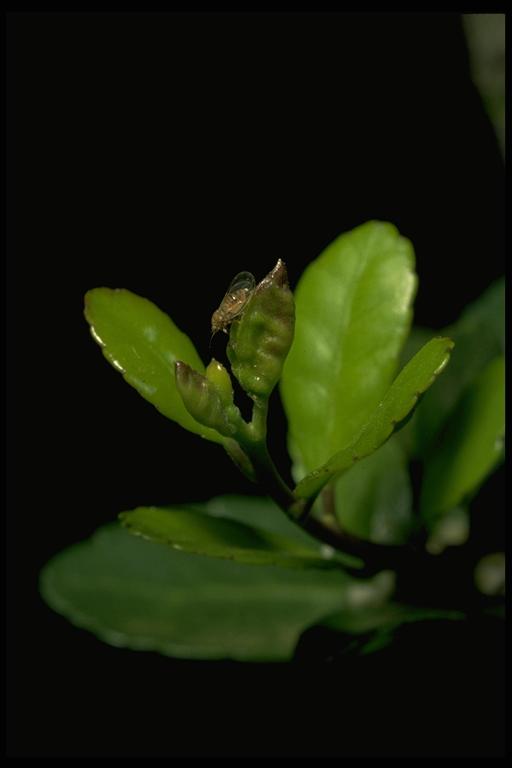
Yaupon psyllid gall, Gyropsylla ilicis (Ashmead) (Homoptera: Psyllidae). Photo by Drees.
Common Name: Yaupon psyllid gall
Scientific Name: Gyropsylla ilicis (Ashmead)
Order: Homoptera
Description:The adult insect resembles tiny (3/16 inch) cicada. Galls produced by aphid-like immature stages appear as folded leaves on new, terminal growth. Immature yaupon psyllid nymphs are inside and are associated with a buildup of waxy filaments.
This is the only gall-making psyllid on yaupon. However, other psyllid species cause galls to form on the leaves of other plants species.
Life Cycle: Adults are most active in late winter to early spring (late February to early March) when host plants flower and begin developing new leaves. Females lay clusters of eggs on opening leaf buds. First stage (instar) nymphs begin feeding on expanding leaves which causes the leaf to deform by cupping upwards. Clusters of nymphs occurring together in deformed leaves develop through several stages for about 10 months before beginning to emerge as adults in November. There is one generation per year.
Habitat and Food Source(s): This species attacks native yaupon hollies in landscapes. Dwarf yaupon is less affected. Inside leaf galls, along with a number of nymphs is a white wax-covered fluid-filled ball slightly larger than a full-grown nymph that apparently is filled with honeydew excreted by the nymphs. Adults can be found on yaupon foliage in early spring.
Pest Status, Damage: Tiny, rarely seen; cause pocket-like galls that deform and stunt new growth of yaupon hollies; medically harmless.
For additional information, contact your local Texas A&M AgriLife Extension Service agent or search for other state Extension offices.
Literature: Mead 1983.